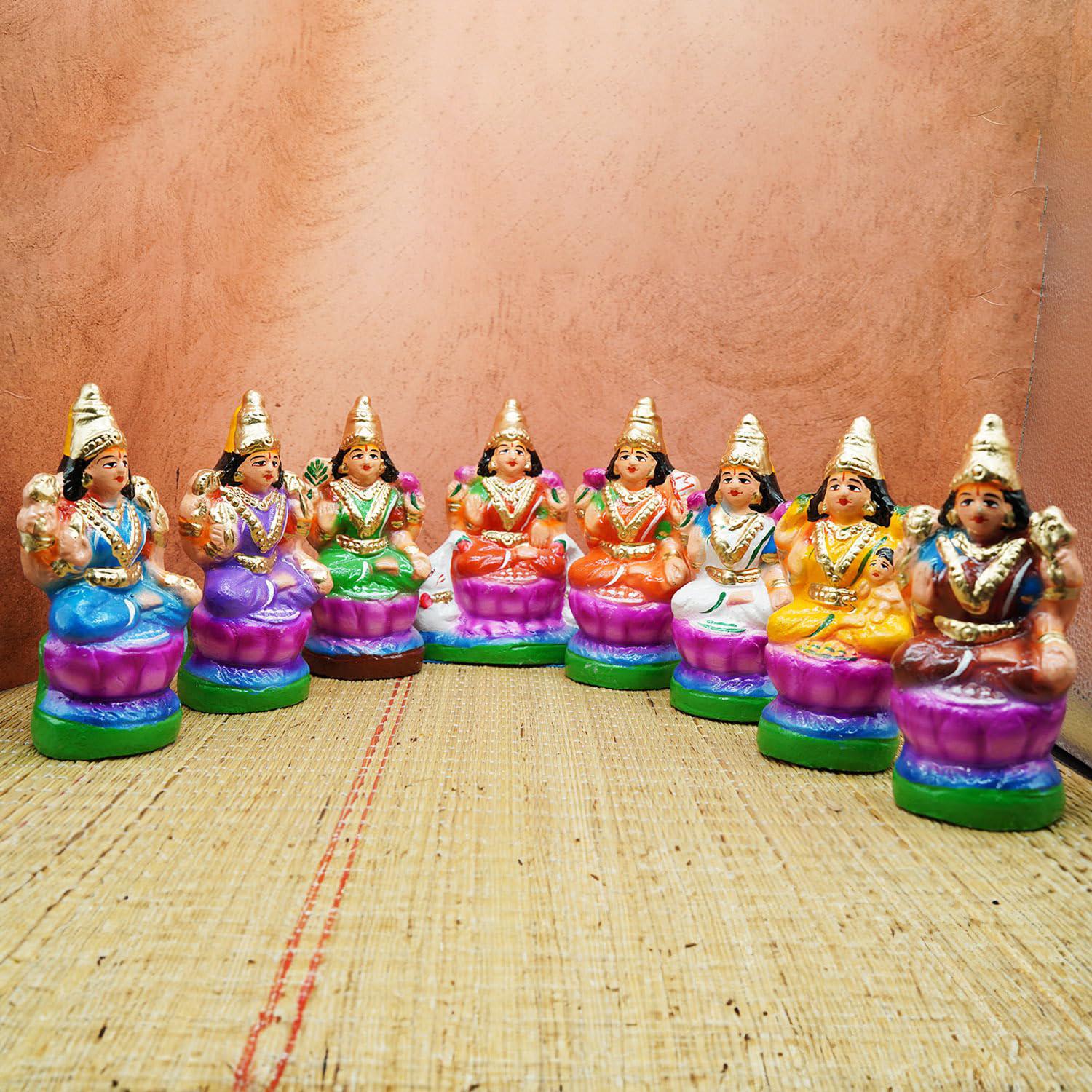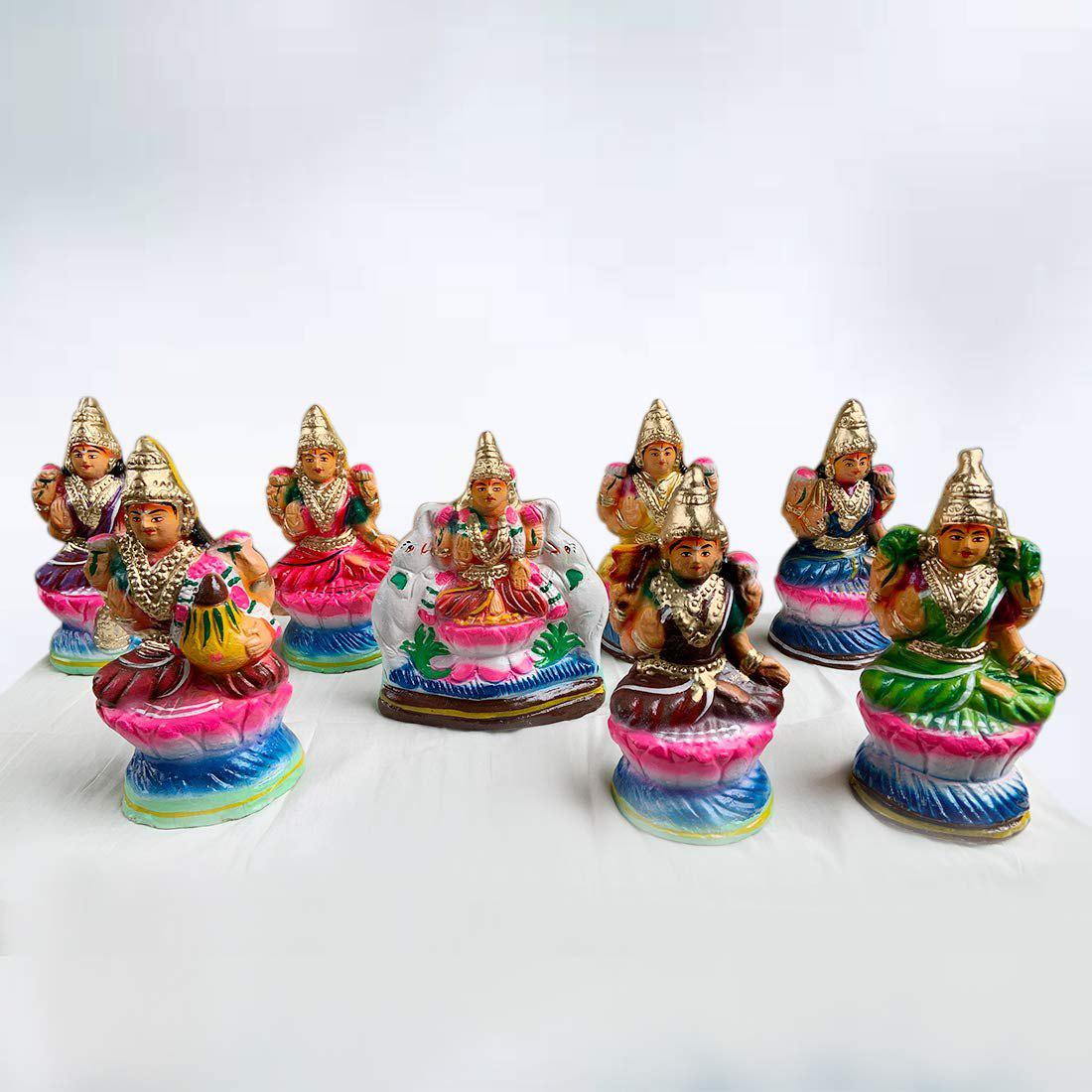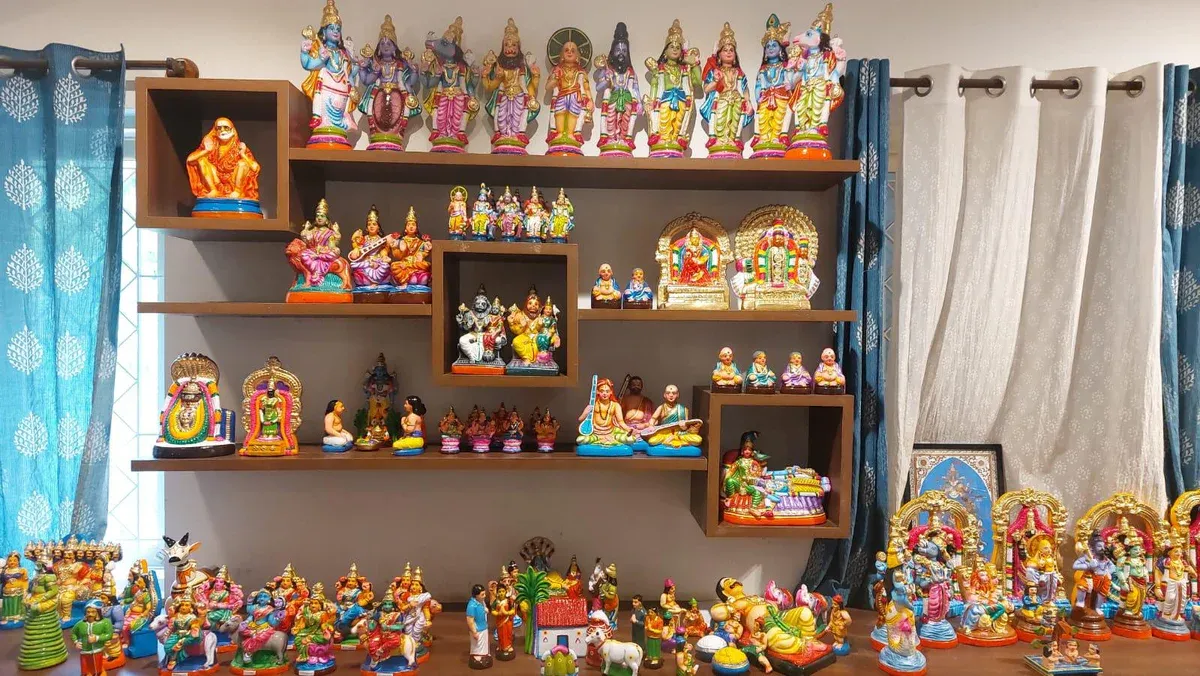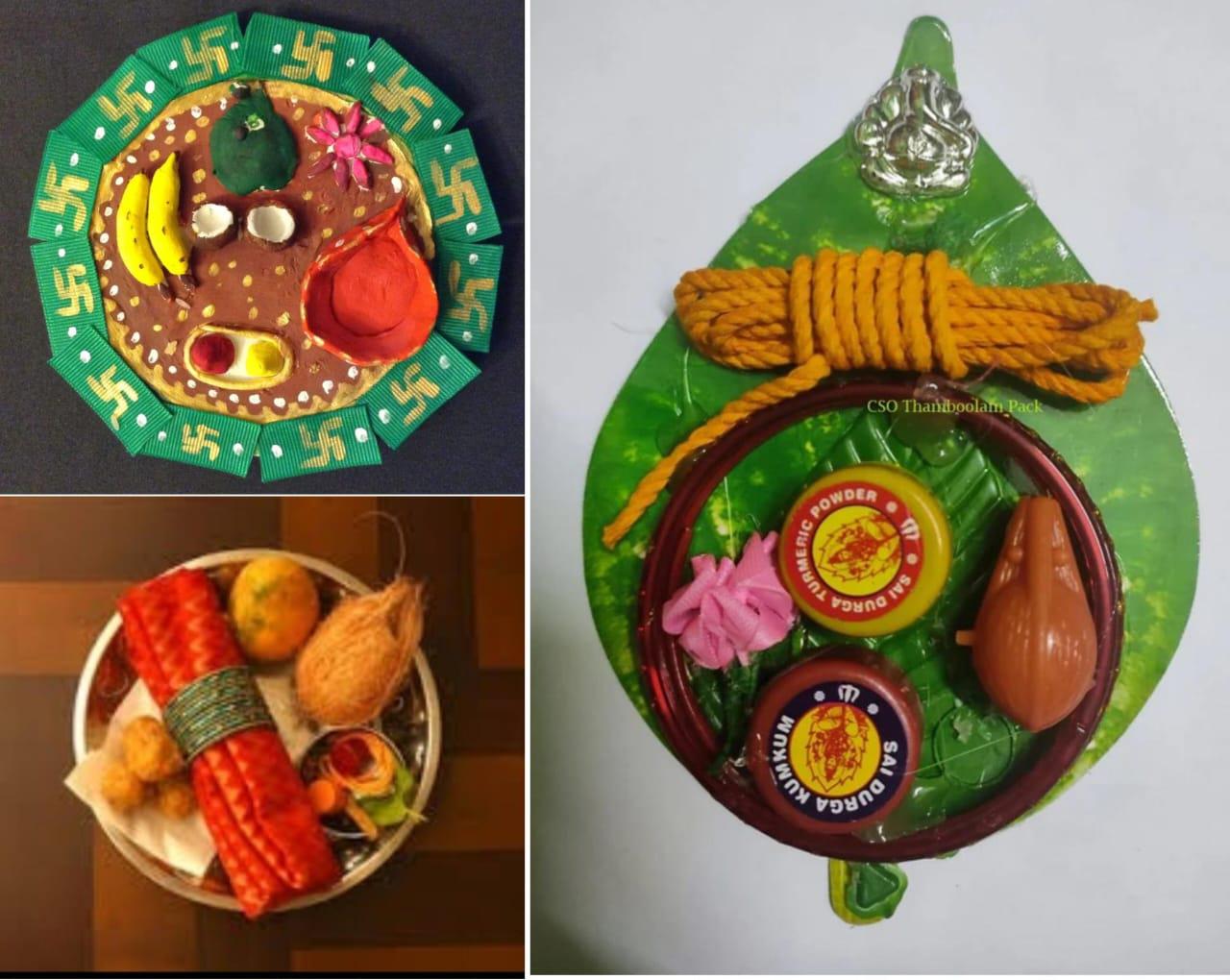The festival of the divine golu dolls!
Golu dolls are an essential part of the Hindu Navaratri festival in South India, where they are arranged on tiered steps as a festive display. The Golu serves as a way to invite the divine energies during the Navratras into the home and create a spiritually charged atmosphere.

In South India, this spiritual narrative transforms into a tangible celebration of community and tradition: the Nine-Day Dolls festival. This tradition is known by different names across the region: 'Bommai Golu' in Tamil Nadu 'Bommala Koluvu' in Andhra Pradesh and Telangana 'Bombe Habba' in Karnataka .
In ancient times, this tradition was significantly enhanced by royal patronage with rulers of the Vijayanagara Kingdom and later the Thanjavur Marathas setting up elaborate displays in their court. For many Brahmin families, the Golu display is a multi-generational legacy passed down from mothers to daughters and daughters-in-law. The dolls, often heirloom pieces, are brought out annually and arranged to tell stories from Hindu epics.

While the tradition has strong ties to Tamil Brahmin communities, it is now celebrated by people from different backgrounds and strata of society across states like Tamil Nadu, Karnataka, and Andhra Pradesh. The dolls are used to visually narrate stories from Hindu mythology and epic texts, such as the Ramayana and Mahabharata. They also depict scenes of court life, everyday rural scenes, and modern social themes.
The arrangement on an odd number of tiers (usually 3, 5, 7, or 9) represents the divine and human cosmic hierarchy. Deities are placed on the highest steps, while representations of saints, humans, and scenes of daily life are on the lower tiers.These are typically made by rural artisans from clay and wooden materials then brightly painted.

The nine-night festival honors the goddess Durga and her various manifestations, as well as the goddesses Lakshmi (prosperity) and Saraswati (knowledge). The display symbolizes the triumph of good over evil.
Families and neighbors visit each other to view the elaborate displays, exchange gifts and festive foods like sundal, and sing Bhajans.Lamps are lit alongwith rangoli and guests invited to view the golu, share traditional sweets, and receive gifts like turmeric, kumkum, and flowers. Women wearing traditional bright-coloured pattu pavadais with jasmine flowers in their hair gifting 'Thamboolam' which is a cherished custom for expressing gratitude and goodwill to guests results in a glorious occasion to eat and meet in harmonious communion.
The festival culminates on Vijayadashami, with special prayers and a symbolic packing away of the dolls, marking the end of the celebration and a new beginning. Golu displays are as unique as the families that create them, standing as vibrant testaments to both tradition and innovation. A custom is to add at least one new doll each year to the display, signifying growth and progress.
Keeping Golu is an ancient way of sharing stories and knowledge, especially for children, as it vividly depicts narratives from Hindu mythology and daily life. The Golu festival is a lively melange of colourful dolls, womenhood and spirituality and is a delightful reminder of the rich and colorful historical and cultural heritage of India!
Comments (7)







